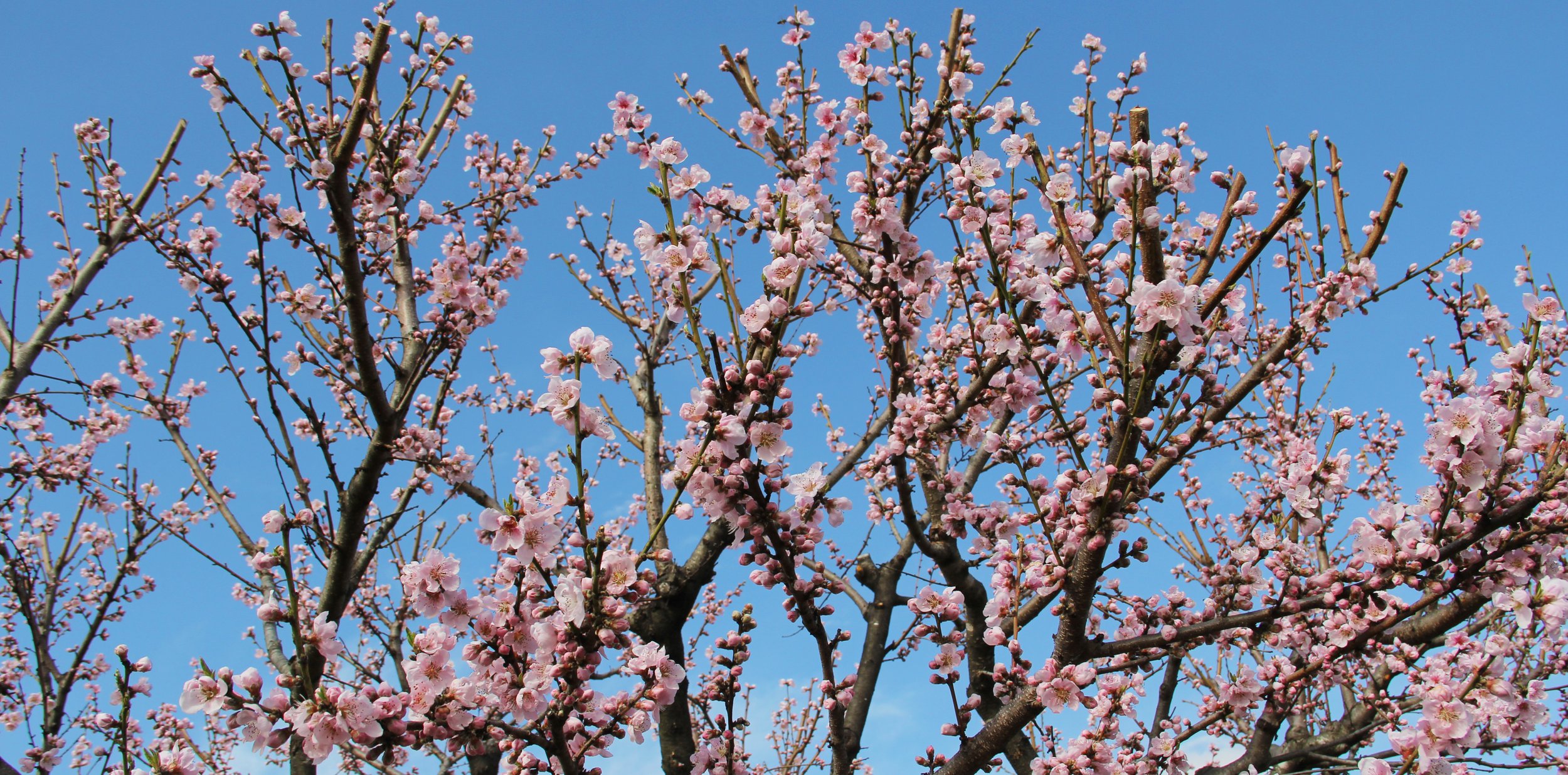Plants of the Lunar New Year
Rachel Martin
January 1st is the official start of the new year in the Gregorian calendar system. There are, however, long-standing traditions and festivals centered around time-reckoning that denote the New Year to align with other calendars, thus falling on different dates. The time between the Winter Solstice and the Spring Equinox signals the Lunar New Year, which aligns with the lunisolar calendar. In China, it is often referred to as the Spring Festival, ( 春节, Chūnjié), in Vietnam it is referred to as Tết which is short for Tết Nguyên Đán. Korea also observes Seollal (설날) as does Japan (正月, Shōgatsu), along with many other countries. This year, the start of one of the most important holidays will be held on January 22nd and will welcome the Year of the Rabbit in the Chinese zodiac.
Read on to learn more about the plants of the Lunar New Year and how they play an integral role in the celebrations.
Peach
Prunus persica is part of the Rosaceae family, which is one of the largest plant families. The genus Prunus sp. alone encompasses more than 200 shrubs and trees.
Most associate this plant with the fruits that are yielded in summer, which have been bred and grafted for agricultural suitability and consumer demands. Poet T’ao Ch’ien was enamored with peach blossoms and wrote “Peach Blossom Spring” which became a great literary legend. In China, where the common peach is native, the tree is highly regarded and the wood or twigs are hung over front gates in order to ward off evil spirits. Large branches are harvested or bought from the markets which have swaths of people around the time of the New Year. They are also brought indoors where the colorful light pink, coral, and deep red blooms are believed to bring peace and health for the family.
Chinese New Year flower
Image via Kadoorie Farm and Botanic Garden.
The Chinese New Year Flower leaves no debate for what holiday it's most associated with. Enkianthus quinqueflorus is a small deciduous shrub native to mixed forests and hillsides of South Central China, Laos, and Northern Vietnam. The blooms emerge soft pink in color or sometimes translucent ivory clusters, with delicate bell-like flowers. Sometimes they are also aptly referred to as Pink Chandeliers. Due to their popularity in association with the Lunar New Year, the species has been subjected to overharvesting and is now listed as protected.
Sacred lily
Narcissus tazetta subsp. chinensis are intimately associated with the Lunar New Year. The genus of Narcissus typically keeps to Central Europe and the Mediterranean region and is closely associated with the common Paperwhites, but one species persists in China. There are early horticulture records of it being grown in the Song Dynasty (c. 690 CE) and due to their early bloom time, they became strongly associated with the Chinese New Year. Today, in the Fukien Province, there are generations of skilled horticulturists who continue to carefully cultivate the bulbs for commercial exporting. The Chinese name 水仙花 (Shuǐxiān huā) can be translated into “water flower”, or in Vietnamese, Hoa Thủy Tiên “Fairy Flower.” In order for good fortune to be brought, it’s believed that the daffodils should be in flower as the point in transition to the New Year begins. The yellow corona is also thought to symbolize good luck.
Japanese apricot
Prunus mume. Image via Naturalis Biodiversity Center/Wikimedia Commons.
Despite the common name, Prunus mume does not have native distributions in Japan though is widely grown there now. As with the Peach, it lives in the Rosaceae family and botanically is more closely related to plums than apricots. The native range of Prunus mume has been pinpointed to the Shensi Province in northern China. Many older specimens have been recorded to live to over 1,000 years and their crooked, artful branching has been the source of inspiration and depiction in paintings for thousands of years. In Spring, the cream white and faint pink flowers bloom and offer up a sweet fragrance. The flowers themselves are 5-petaled, which symbolizes good luck and peace in China. They are also associated with courage as their bloom time is early in the year, between the end of winter and the beginning of spring.
References:
Lam, Vivan. “Comic: Welcome Lunar New Year with These 9 Plants.” Los Angeles Times, Los Angeles Times, 2 Feb. 2022, https://www.latimes.com/lifestyle/story/2022-02-02/comic-welcome-lunar-new-year-with-these-9-plants.
Li, Hui-Lin. Garden Flowers of China. Ronald P., 1959.
“Meet the Chinese New Year Beauty Queens.” Kadoorie Farm and Botanic Garden::嘉道理農場暨植物園, 29 Jan. 2020, https://www.kfbg.org/en/KFBG-blog/post/Meet-the-Chinese-New-Year-Beauty-Queens.
Metcalf, Franklin P. “FLOWERS OF THE CHINESE NEW YEAR.” Arnoldia, vol. 2, no. 1, 1942, pp. 1–8. JSTOR, http://www.jstor.org/stable/42953483. Accessed 18 Jan. 2023.
“Say It with Narcissi: Flowers to Celebrate the Chinese New Year.” "Nature Meets Culture" Stories, 19 Jan. 2017, https://naturemeetsculturestories.wordpress.com/2017/01/19/oriental-narcissi/. Y
Vietnam Times, Hannah Nguyen. “Peach Blossoms, Flower of Vietnamese Lunar New Year.” Vietnam Times, 11 Feb. 2021, https://vietnamtimes.org.vn/peach-blossoms-flower-of-vietnamese-lunar-new-year-28161.html.




